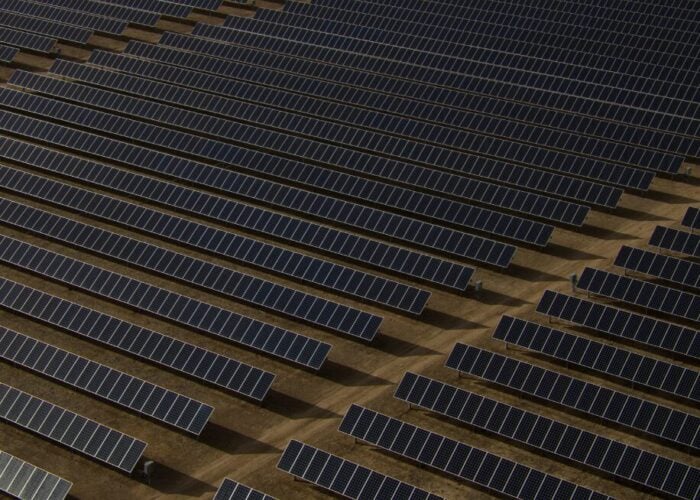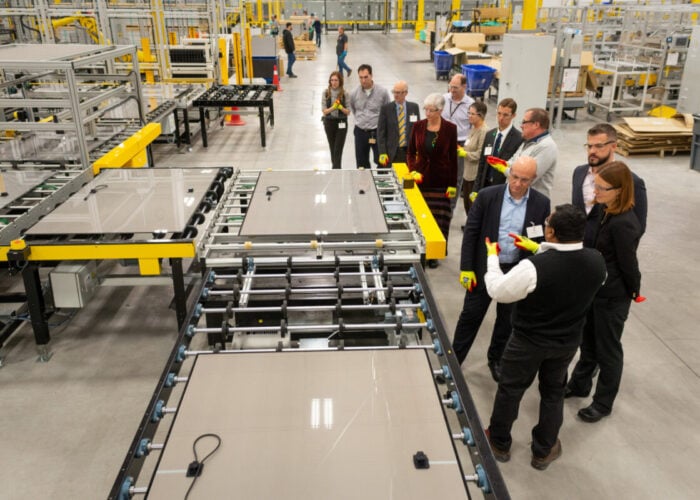
The US added 7.4GW of new renewable energy capacity in the first three months of 2025, with deployments and planned projects concentrated in Republican-voting states.
This is according to data from the American Clean Power (ACP) association, which said that 2025 has had the second-strongest start for clean energy deployments of any year on record.
Try Premium for just $1
- Full premium access for the first month at only $1
- Converts to an annual rate after 30 days unless cancelled
- Cancel anytime during the trial period
Premium Benefits
- Expert industry analysis and interviews
- Digital access to PV Tech Power journal
- Exclusive event discounts
Or get the full Premium subscription right away
Or continue reading this article for free
Total installed US solar PV, energy storage and wind power capacity, after the 7.4GW of new power, reached over 320GW as of the end of March, ACP said. Utility-scale solar led the Q1 additions by far, with 4.46GW of new capacity added compared with 1.6GW of energy storage and 1.3GW of onshore wind capacity.
Perhaps more notable than the new additions, ACP said that the national renewable energy project pipeline grew 12% year-on-year in Q1 2025, reaching 184.4GW. The energy storage pipeline, in particular, grew by 57%. If everything in the pipeline is built, ACP said it will represent US$328 billion in project investment.
It noted that projects included in this figure are “typically” fully permitted projects, and that the growth of the pipeline does not indicate growth in the number of projects receiving permits. However, ACP’s announcement said: “These market-driven investments reflect growing demand for reliable, affordable domestic energy from utilities and major American companies.”
“Clean power is shovel-ready at scale. With unprecedented demand growth for electricity, we must send consistent investment signals across the energy sector,” said ACP CEO Jason Grumet. “We have the technology, investment capital, and workforce required to build the US$300+ billion of clean energy projects in our development pipeline. The greatest threat to a reliable energy system is an unreliable political system.”
Republican states
Of the ten states which installed the most capacity in Q1, eight voted Republican in the November presidential election, ACP said. Texas, Florida and Indiana, all of which are red states, led Q1 installations, with the former far outstripping any other state and growing by 20% to reach over 80GW of cumulative capacity.
ACP’s report said: “The industry’s growth is particularly strong in Republican-leaning states, where domestic manufacturing and energy production has created nearly 650,000 direct and indirect jobs and generates US$3.4 billion in annual tax revenue and payments to landowners in rural communities.”
Since coming to power, Donald Trump’s Republican administration has set about broadly attacking the federal incentives for clean energy production and manufacturing introduced by the previous government. Most recently, a bill which passed the US House of Representatives proposes to effectively end the 30% investment and production tax credits (ITC/PTC) for clean energy projects under the Inflation Reduction Act (IRA) by imposing a 60-day deadline for any project to receive federal credits.
Many in the renewables industries – particularly solar PV, which has become the leading source of new US electricity capacity – have pointed to the positive benefits that Republican states have seen off the back of IRA tax credits. Much of the roughly 50GW of US solar module manufacturing capacity now operational is in broadly Republican states like Texas, Ohio and Georgia.
Nonetheless, clean energy has become politicised amid broad pushback against net-zero policies and a presidential promise to “drill, baby, drill”.
Despite the strong installation figures reported by ACP, another report published this week by research platform E2 found that US firms had delayed or cancelled US$14 billion worth of clean energy investments since January 2025, the month when Trump took office.
Crucially, the report said that significantly more investment had been delayed or cancelled than had gone ahead in the first four months of the year.






